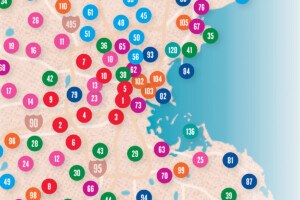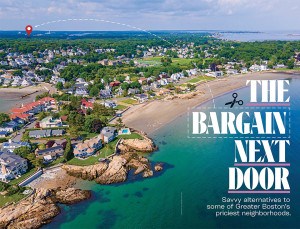Siblings and the Boston Public School Lottery
If you’ve got young kids in the city, the Boston Public Schools lottery is on your mind. Boston‘s Amy Traverso recently prescribed strategies for dealing with it, while the Globe has chronicled the school assignment process, too.
This year’s first round of assignments went out a few weeks ago and participants have been mulling their options ever since.
It’s a damnably complex process as is the range of outcomes — a dizzying mix of acceptance at desired schools, acceptance at marginally acceptable schools, outright rejection, and varying levels of wait-list purgatory. (How many other lotteries have extensive econometric literature on them?)
For some, it’s the final straw before they move out of town. And for many of us who have been through it before, it’s agonizing to watch newcomers grapple with the process and their outcomes.
BPS does try to prepare parents for the difficulty of getting into certain schools by releasing information on the demand levels for each school. And they actively note that many schools are in high demand and that parents should look at all their options. But part of their communication to parents is a list of “available seats” at each school, which can be misleading to the uninitiated.
One thing you learn in the lottery is the significance of sibling preference (i.e. if you already have a sibling at the school, you are almost a lock to get in). For popular schools, a good chunk of the so-called “available seats” are actually taken up by siblings.
The policy itself makes sense — educating siblings together seems like a sound concept for both the children and for the parents (who aren’t burdened with transportation and extracurricular issues at multiple locations). But it makes it harder for newcomers to get into certain schools — a lot harder.
BPS released data publicly on sibling preference in 2005, but hasn’t since. I did a freedom of information act request to get the data since 2005: Here it is.
But what does it mean? For some of the more popular schools, a newcomer to the process is really only competing over something close to half of the seats identified as “available.”
For example, the Kilmer School in West Roxbury had 2.8 applicants who made the Kilmer their first choice for each “available seat” last year. But over the past five years, it has admitted between 12 and 29 students each year through sibling preference. If this trend holds for this year, the 44 available seats for newcomers is likely closer to 20 – 25 seats, after siblings. That means the number of first-choice applicants for the seats actually available is closer to 4.
Sibling preference makes sense, but prospective lottery participants would be better served by a more honest appraisal of their odds.
If you’re interested, I’ve written previously on the Boston Public School lottery — here, here, here, and here.
Cross-posted at the Pioneer Institute blog.


